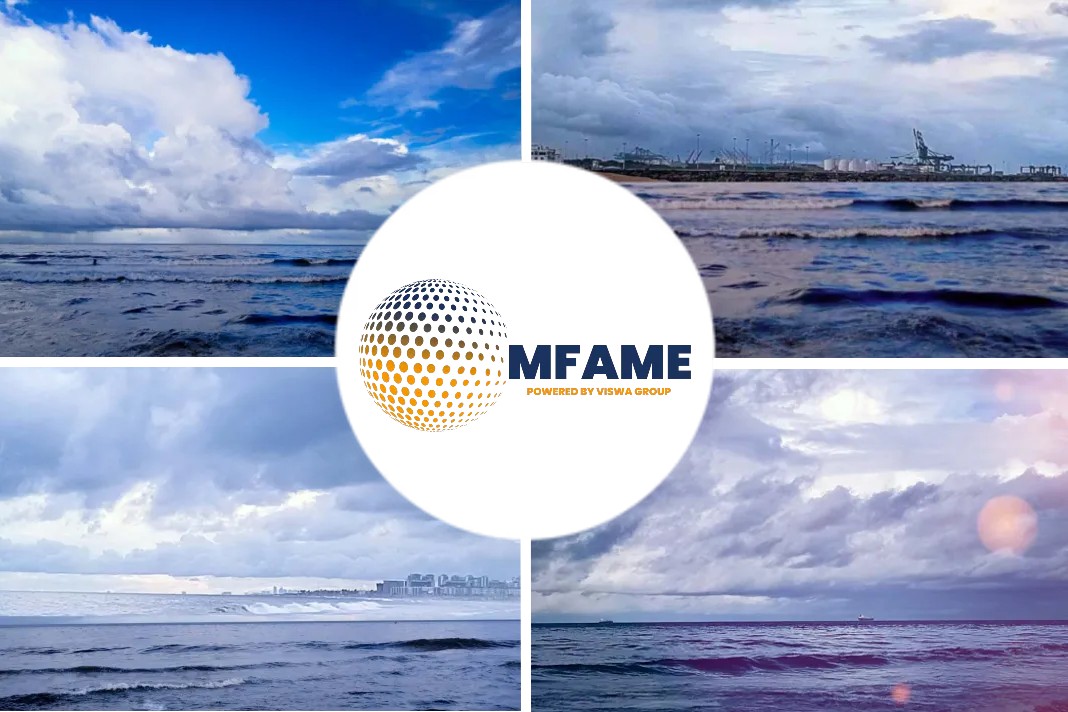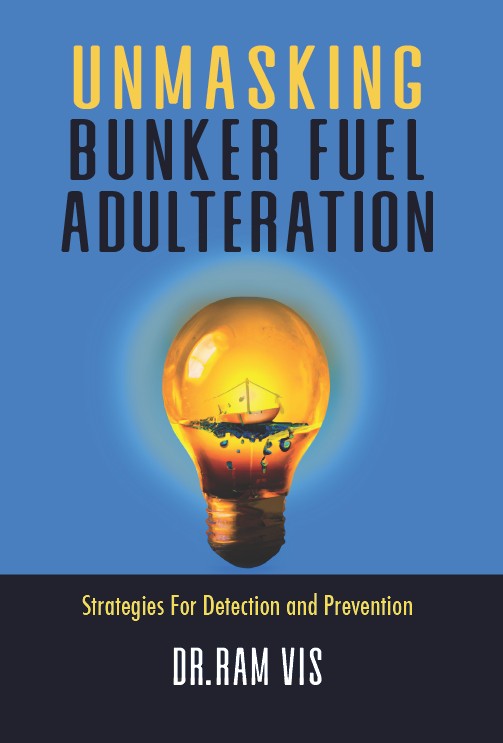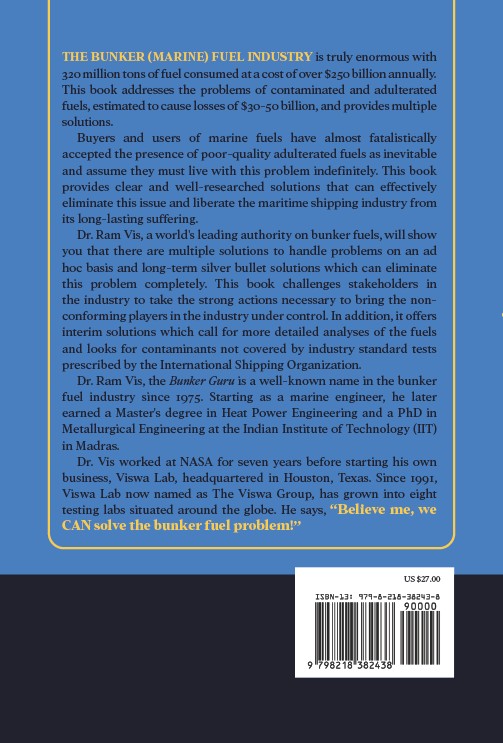Ahead of the implementation of IMO sulphur regulations, The Maritime Executive Marine Strategy Editor had an interview with Edmund Hughes, Head of Air Pollution and Energy Efficiency at IMO. For the question, “if the industry is ready for IMO 2020?,” Hughes is confident that the industry is ready.
Here’s an excerpt from that interview as published in The Maritime Executive.
Industry is ready for 2020
Edmund Hughes has day to day responsibility for MARPOL Annex VI, including the development and finalization of the instruments to support the consistent implementation of the 0.50 percent sulfur cap, and he is confident the industry is ready.
Hughes, Head of Air Pollution and Energy Efficiency at IMO, was also responsible for the development of the Initial IMO GHG Strategy adopted by MEPC 72 in April 2018.
Is the industry really ready?
The industry has had three years to prepare for IMO 2020. Is it ready?
Yes, there is every reason to be confident the industry is ready. Major refineries and bunkering ports have confirmed that low sulfur fuel oil to meet the 0.50 percent limit is going to be available from now (the last quarter of 2019).
My view is that there has been sufficient time for preparation – you will recall that the 0.50 percent limit was adopted in 2008 and confirmed again in October 2016. The indications are that there is now a high level of awareness that the new limit applies from January 1, 2020 – and that the industry is ready.
- A great deal of preparation has been done.
- IMO issued guidance on ship implementation planning, addressing things like tank cleaning, in 2018.
- Various other sets of guidelines and guidance have been issued, including comprehensive 2019 Guidelines on consistent implementation of 0.50 percent sulfur limit under MARPOL Annex VI.
- IMO has also issued guidance for port state control.
- A joint industry group has also developed its own guidance, Joint Industry Guidance on the Supply and Use of 0.50% Sulphur Marine Fuel, which IMO has shared with its Member States and international organizations in a circular letter.
- As well as the regular IMO meetings, which provide a forum for discussion, exchange of views and adoption/approval of guidance, IMO has also instigated stakeholder meetings and recently held a public symposium on IMO 2020 and alternative fuels.
Economic impact
What economic impact will this regulation have across global markets?
Of course, there is a cost implication. Refineries are producing new blends of low sulfur fuel oil (and some ships have invested in exhaust gas cleaning systems, otherwise known as scrubbers). There are forecasts that the price differential between the heavy fuel oil used now and the new low sulfur blends will be significant – and this could cost between $30 billion and $60 billion per year in additional fuel costs.
Ultimately, these costs will be passed on to consumers and end users of the cargo carried by sea. But shipping will still be the most cost-efficient way of transporting bulk cargoes. The increased cost to the public of a pair of shoes will be minimal.
The important point to make here is the environmental and human health benefits of this move. We all have a stake in cutting pollution. We all have to pay the costs. Putting the burden of cost onto shipping reflects the “polluter pays” principle.
Benefits from reducing sulphur emission
What are the main benefits in reducing sulfur emissions from 3.5 to 0.5 percent?
We know from studies that there will be reductions in stroke, asthma, cardiovascular disease, lung cancer and pulmonary disease by implementing the new lower limit for sulfur in fuel oil.
This will be particularly true for populations living close to coastal and port areas. Reduction of impacts will reduce harm to the individual and present economic cost savings to wider society.
Furthermore, cutting sulfur emissions from ships will help reduce environmental damage resulting from the formation of acid rain.
The popular solution and the reason
What solution is expected to be more popular and why?
The global fleet is adapting to this change by retrofitting technology to vessels, using cleaner LSFO or investing in LNG.
Studies suggest that most ships will switch to compliant low sulfur fuel oil. The refineries are responding to this predicted demand by supplying new fuel oil blends. The advantage is that these new fuels can be switched into fuel tanks (once they have been cleaned, to avoid contamination with heavy fuel oil residues).
Proper risk assessment
With proper risk assessment, it should be a relatively straightforward process. Of course, ship engineers will need to be aware, and there should be a risk assessment, with ships being advised to assess the potential impact on machinery systems with the use of distillates and fuel oil blends and to prepare ships in consultation with chief engineers, equipment manufacturers and suppliers.
Tank configuration
The ship tank configuration and fuel system may require adjustments. A fully segregated fuel system for distillate fuels and blended fuels is recommended because they may require special attention. Ship tank re-configuration and segregated fuel system will also allow for better management of potentially incompatible fuels.
Scrubbers
Some ship operators/owners are choosing to install scrubbers, so they will continue to procure and burn heavy fuel oil, but the emissions limit will be achieved through exhaust gas cleaning.
Estimates suggest up to around 4,000 ships will use scrubbers. But it is not so much the number of ships, as the type of ship and volumes of fuel oil they consume, that will have the greatest impact on the market.
LNG
A smaller proportion of ships have switched to LNG as fuel, and several ships are being built to use gas as a fuel alone or have dual-fuel capability. The use of gas usually requires a structural conversion, including creating space to store LNG on the vessel.
The IMO has already developed the International Code of Safety for Ships using Gases or other Low-flashpoint Fuels (IGF Code) to enable ships to be constructed to make use of gas as fuel.
Ultimately the type of fuel to use is a commercial decision for the shipowner/operator.
How is compliance ensured?
What measures are in place to ensure compliance with IMO 2020?
There is a long-standing system in place to ensure compliance with IMO rules, through flag and port State controls.
Relevant certificate from Flag state
First the flag state is responsible for issuing the relevant certificate to the ship, confirming that they comply. For MARPOL Annex VI, which contains the sulfur limit, this is the International Air Pollution Prevention Certificate (IAPP) – issued to ships over 400 gross tonnage.
Port state control inspections
Then there is port state control. Port states can inspect any flag ship in their ports. During the port state control and other enforcement activities, the port state should investigate whether a ship carries either compliant fuel oils or heavy fuel oils for use, based on the documents the ship carries, such as the bunker delivery note, and whether the ship is using an equivalent means of compliance i.e. a scrubber.
When the port state identifies clear grounds of suspected non-compliance of a ship based on initial inspections, the port state may require samples of fuel oils to be analyzed. Some states are using technology such as sniffers or drones to identify ships which may be in violation of the rules. Once identified, they then follow-up with more detailed inspections.
FONAR
To support consistent implementation by flag and port states, IMO has issued guidance.
One thing to bear in mind, is that when a ship simply cannot find compliant fuel oil, it can provide evidence, in the form of a fuel oil non-availability report (FONAR). But shipowners should remember that a FONAR is not an exemption – and they are reminded of this in the 2019 Guidelines on consistent implementation of 0.50 percent sulfur limit under MARPOL Annex VI which IMO has adopted.
According to regulation 18.2 of MARPOL Annex VI, it is the responsibility of the party of the destination port, through its competent authority, “to scrutinize the information provided and take action, as appropriate.” If there is an insufficiently supported and/or repeated claims of non-availability, the party may require additional documentation and substantiation of fuel oil non-availability claims. The ship/operator may also be subject to more extensive inspections or examinations while in port.
Furthermore, if the port state control authority decides to require the ship to come back into compliance, the ship will need to procure compliant fuel oil and clean the fuel tanks and lines to ensure the compliant fuel oil is not contaminated.
Ships/operators are expected to take into account logistical conditions and/or terminal/port policies when planning bunkering. This could mean having to change berth or anchor within a port or terminal in order to obtain compliant fuel. They are also expected to prepare as far as reasonably practicable to be able to operate on compliant fuel oils.
Scrubbers
IMO has also adopted a carriage ban on heavy fuel oil, which enters into force on March 1, 2020. This is the MARPOL amendment adopted in 2018 to prohibit the carriage of non-compliant fuel oil for combustion purposes for propulsion or operation on board a ship – unless the ship has an exhaust gas cleaning system (scrubber) fitted. The amendment is intended as an additional measure to support consistent implementation and compliance and provide a means for effective enforcement by states, particularly port state control.
The specific provision requires that fuel oil used on board ships shall not exceed 0.50 percent sulfur limit. The amended provision to prohibit the carriage of non-compliant fuel oil reads as follows: “The sulfur content of fuel oil used or carried for use on board a ship shall not exceed 0.50 percent m/m.” So, carriage of fuel oil for use on board ships will be prohibited from March 1, 2020 if the sulfur content exceeds 0.50 percent – unless a scrubber is fitted (the provision does not apply to fuel oil being carried as cargo).
Regulation after 2020?
In terms of environmental regulation, what does the future look like after 2020?
The sulfur limit is just one tool in IMO’s efforts to ensure a more sustainable and greener shipping industry – and in particular the decarbonization of shipping.
In 2018, IMO member states adopted an initial strategy for cutting GHG emissions from shipping and phasing them out entirely, as soon as possible. The strategy includes a specific linkage to the Paris Agreement, and clear levels of ambition – including at least a 50 percent cut in emissions from the sector by 2050, compared to 2008.
Since global trade and maritime transport are expected to continue to grow in the coming years – last year 11 billion tons of cargo was carried for the first time – to achieve the specified targets, ships would have to reduce their emissions by more than 80 percent. The agreed reduction targets signify a tangible trajectory towards decarbonizing shipping.
Therefore, zero-emission ships should begin to be built well before 2050, hopefully by the 2030s.
Did you subscribe to our daily newsletter?
It’s Free! Click here to Subscribe!
Source: The Maritime Executive























